Rolex began its GMT-Master story in 1955 with its very first pilot watch made for Pan Am Airlines, the reference 6542. More than four decades later, the Swiss watchmaker concluded that chapter with its last GMT-Master watch – the ref. 16700. Of course, the Rolex pilot watch saga continues today with the GMT-Master II collection, but the original Rolex GMT-Master is no more.
Let’s delve into that very last reference with the ultimate guide to the Rolex GMT-Master 16700.
Table of Contents:
Rolex GMT-Master 16700
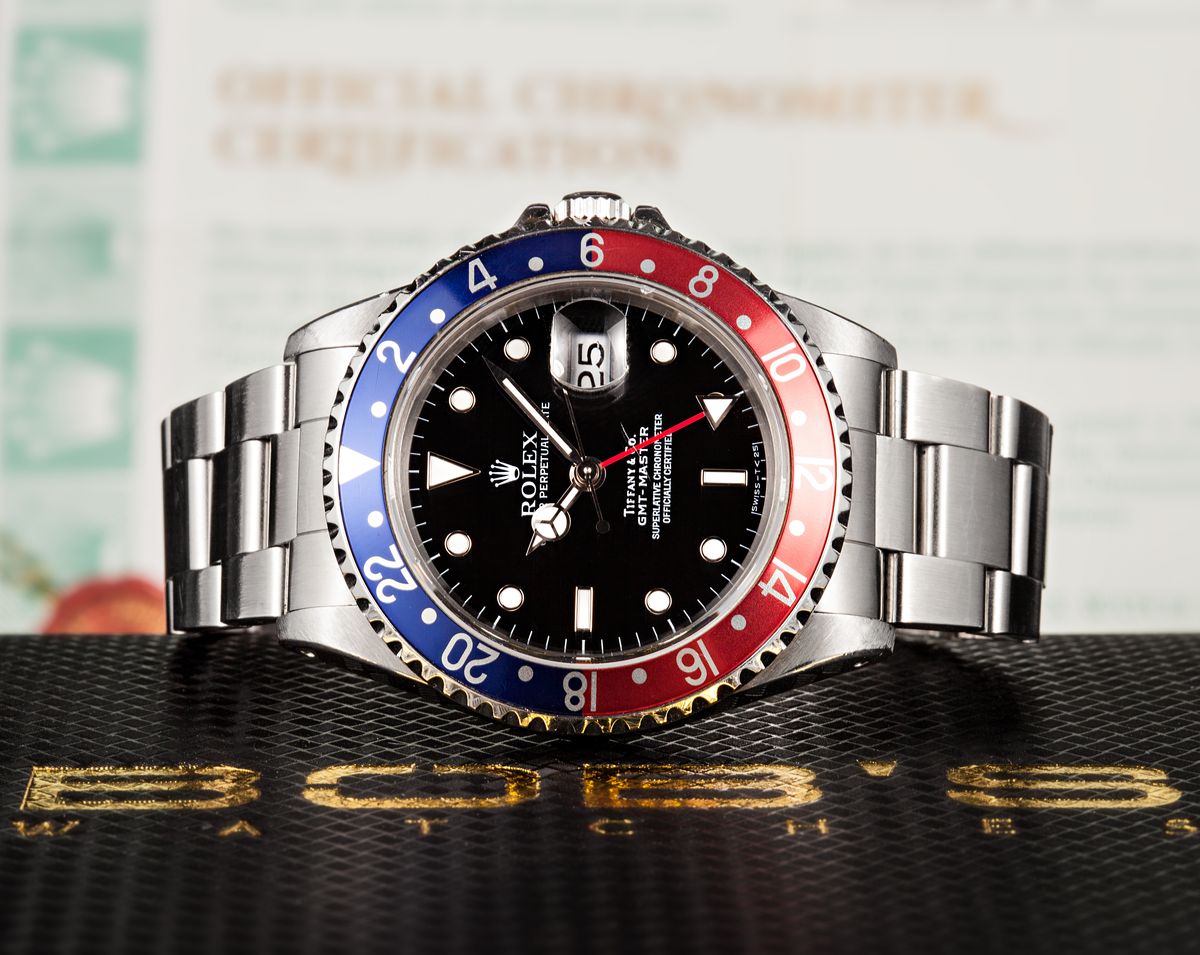
GMT-Master 16700 Key Features:
Production Years: 1988 – 1999
Case Size: 40mm
Materials: Stainless Steel
Functions: Time w/ running seconds, Date display, Second timezone
Bezel: Bidirectional, Aluminum insert w/ 24-hour scale
Bezel Colors: Blue and red (“Pepsi”); Black
Dial: Black, Mercedes-style hands, Red 24-hour hand,
Lume: Tritium or LumiNova
Bracelet: Oyster, Jubilee
Water Resistance: 100 meters / 330 feet
Movement: Caliber 3175 (hacking, Quickset date)
Caliber: 3175
Click here for our Ultimate Buying guide on the Rolex GMT-Master.
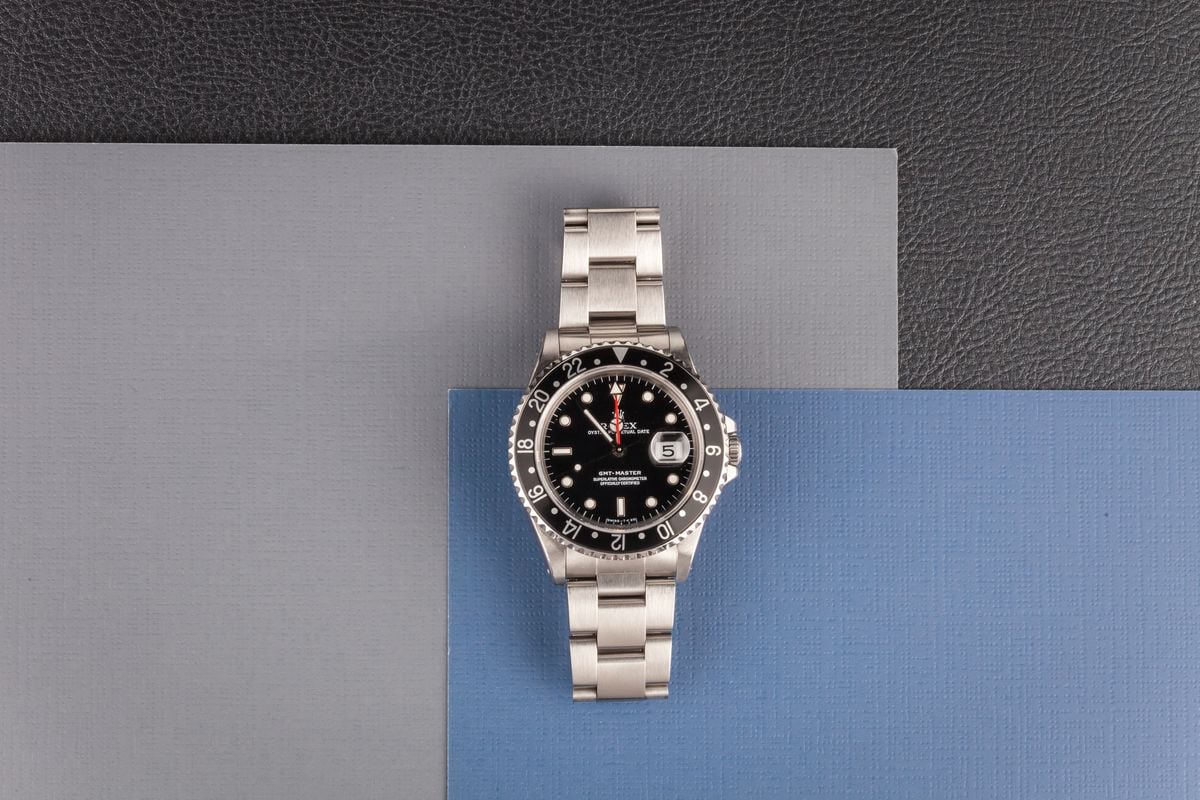
Brief History of the Rolex GMT-Master Collection
The Rolex GMT-Master made its debut in 1955, developed specifically for Pan Am pilots to keep track of two time zones. The cleverly designed Rolex watch included an extra hour hand (which would make one full rotation every 24 hours) on the dial and a rotating 24-hour bezel. Therefore, to display a second time zone, the pilot simply had to rotate the bezel to align the appropriate numeral with the 24-hour hand.
The first reference to launch the collection was the GMT-Master ref. 6542, which featured a 38mm stainless steel case, stainless steel bracelet, and a blue and red rotating Bakelite bezel marked with a 24-hour scale. Not only did the two-tone bezel help to differentiate between night and day hours in the second time zone, but the blue and red colorway also became a signature design trait of the GMT-Master watch. Although the blue and red bezel is officially known as the BLRO (bleu/rouge, which is French for blue/red) it is more commonly referred to by its “Pepsi” nickname.
By the end of the decade, Rolex replaced the inaugural reference with the GMT-Master ref. 1675. Compared to its predecessor, the GMT-Master ref. 1675 sported a larger 40mm case, now with crown guards, and was topped with an aluminum bezel. Since the GMT-Master 1675 was manufactured for over two decades, the model underwent plenty of updates over the years.
Next in line was the GMT-Master 16750, which was launched in 1981 and produced until 1988. While the GMT-Master 16750 was stylistically similar to later versions of the ref. 1675 it replaced, Rolex did equip the newer model with enhancements such as double the water-resistance and an improved movement with a quickset date (where the date can be set independently of the time) and hacking (where the seconds hand comes to a complete stop when the winding crown is pulled out).

The Reference 16700
Finally, 1988 ushered in the arrival of the GMT-Master ref. 16700 with a handful of developments such as sapphire crystal, a dial with applied white gold indexes, and a new movement. However, it is interesting to note that Rolex already introduced the GMT-Master II model five years before the release of the GMT-Master 16700. Having both versions of the pilot’s watch available at the same time was just a matter of economics. The GMT-Master ref. 16700 offered an almost identical look to the GMT-Master II ref. 16710 model but at a lower price point. The main difference between the GMT-Master and the GMT-Master II is the way they function, which we’ll discuss in detail further below.
The Rolex GMT-Master ref. 16700 was in production for a decade until it was discontinued in 1999. And its discontinuation marked the end of the GMT-Master era and paved the way for the GMT-Master II to become Rolex’s flagship pilot’s watch.
Timeline & Milestones
1955 – GMT-Master ref. 6542
1959 – GMT-Master ref. 1675
1981 – GMT-Master ref. 16750
1983 – GMT-Master II ref. 16760
1988 – GMT-Master ref. 16700
1999 – The end of the GMT-Master and takeover of the GMT-Master II

Rolex GMT-Master 16700 Design & Features
Unlike the three previous references of the GMT-Master, the Rolex GMT-Master 16700 was only available in one metal variant and bezel color options were limited to just two.
GMT-Master 16700 Case, Material, and Bracelet
Since the GMT-Master 16700 was positioned as the more affordable alternative to the then-new GMT-Master II, Rolex opted to only offer it in stainless steel. The steel case measures 40mm in diameter and it was rated to be water-resistant to 100 meters – the same as the previous GMT-Master ref. 16750. However, the ref. 16700 was the first GMT-Master with a case furnished with a scratch-resistant sapphire crystal instead of acrylic.
With the GMT-Master 16700, Rolex offered the choice between a sporty three-link Oyster bracelet and a dressier five-link Jubilee bracelet – both in full stainless steel. In 1989, Rolex upgraded the Oyster bracelet to include the more secure Oysterlock clasp, which has an added cover lock mechanism that prevents the bracelet from accidentally opening. Interestingly, customers could also pay a little more to have the Rolex GMT-Master 16700 fitted with the Oyster bracelet ref. 93150 with the diver’s extension clasp normally destined for the Submariner watches of the era.
– Jubilee Bracelet ref. 62510
– Oyster Bracelet ref. 78360
– Oyster Bracelet ref. 78790 with Oysterlock clasp starting in 1989
– Oyster bracelet ref. 93150 with diver’s extension as a premium option
Another great feature of the GMT-Master 16700 that some vintage Rolex collectors will appreciate is the presence of lug holes, which offer a vintage tool watch aesthetic and make swapping out the bracelets for different straps much easier.
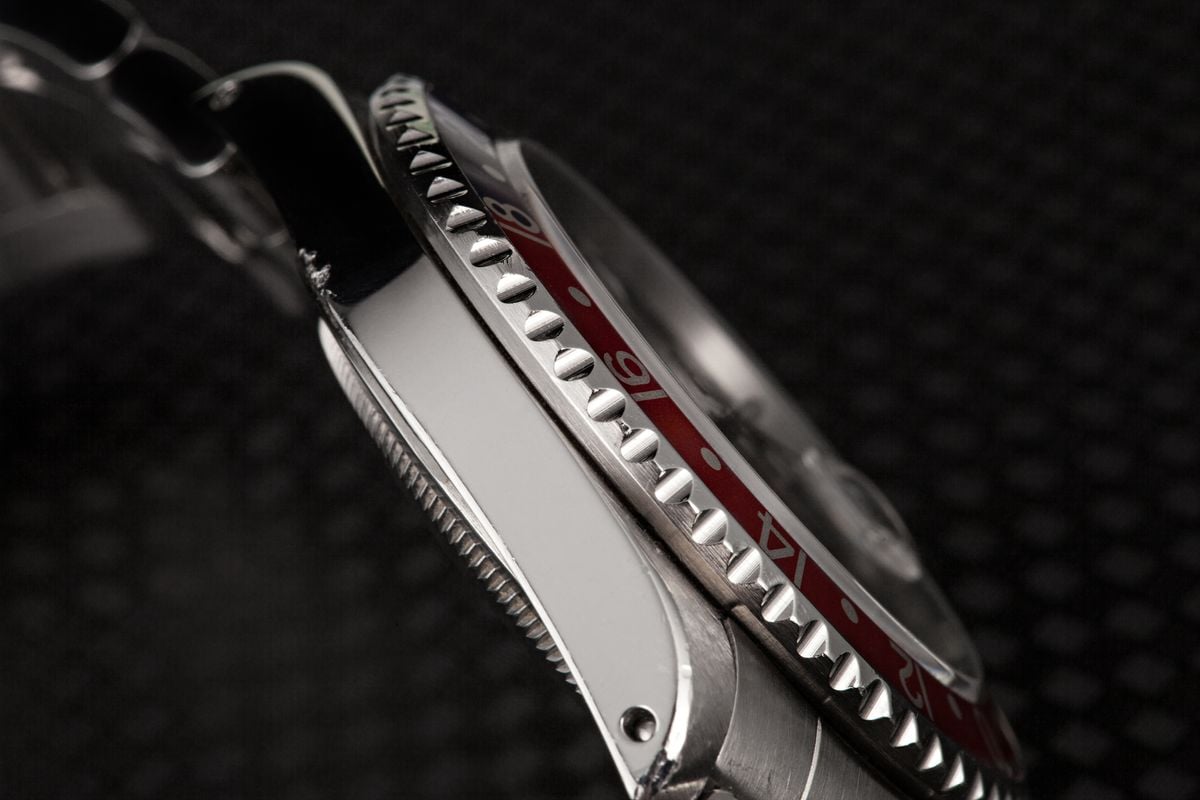
GMT-Master 16700 Dial and Lume
As with most Rolex Professional watches, the GMT-Master ref. 16700 features the familiar dial layout comprised of luminous Mercedes-style hands and a mix of rectangular, circular, and triangular luminous indexes. However, unlike other Rolex sports watches, the GMT-Master’s signature design detail is the existence of a red arrow-tipped 24-hour hand.
GMT-Master watches also have date windows, sitting as always at the 3 o’clock position and magnified by a Cyclops lens. The GMT-Master ref. 16700 date wheel has vintage-style “open 6” numerals up until 1992 when Rolex switched it out for closed ones.
While some later versions of the preceding ref. 16750 already had glossy black dials and hour markers with white gold surrounds, the GMT-Master ref. 16700 made that standard across all examples. Since the GMT-Master 16700 was in production from 1988 until 1999, the luminous material used on the dials changed over the years.
Originally, the dials used tritium for their lume, but around 1998, Rolex switched to modern LumiNova. Generally speaking, tritium Rolex dials have “SWISS T<25” under the 6 o’clock marker while LumiNova dials simply have “SWISS” printed there. Yet, it has been reported that there are some examples of LumiNova lume on “T<25” marked dials. The theory goes that Rolex had leftover “T<25” marked dials and just went ahead and used the then-new LumiNova anyways.
1988 – 1997: Tritium, “SWISS T<25” marking
1997 – 1999: LumiNova, “SWISS” marking
Variant: LumiNova with “SWISS T<25” marking
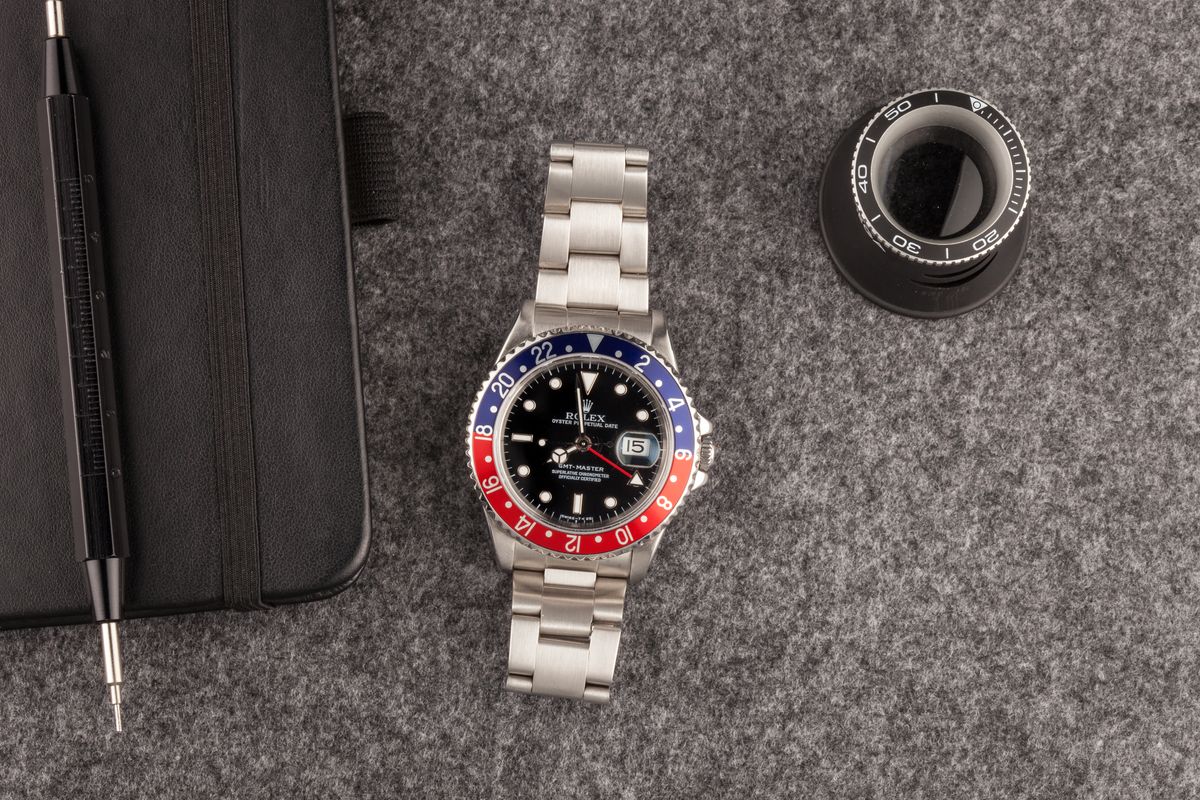
GMT-Master 16700 Bezel
The 24-hour marked bezel of any GMT-Master watch plays a significant role in both the appearance and functionality of the watch. If the bezel is in the “zero” position, which is when the upside-down triangle of the bezel is aligned with the upside-down triangle at the 12 o’clock marker on the dial, then the arrow-tipped 24-hour hand will indicate the same time as the traditional 12-hour hand – just in a 24-hour format (for example, 15 hours for 3 pm). However, rotating the bezel is when the magic happens – turning the bezel until the time in another location is indicated by the 24-hour hand is how the GMT-Master transforms into a dual time watch.
As was the norm for the era, the GMT-Master 16700 is fitted with an aluminum bezel insert. While the majority of the ref. 16700 came with the famed blue and red “Pepsi” bezel, Rolex also offered the choice of a monochromatic black bezel. Additionally, you will also find examples of the ref. 16700 that are now fitted with red and black “Coke” bezels, although it was not a standard option for the model while the reference 16700 was in production.
– The blue and red bezel is officially known as the BLRO (bleu/rouge or blue/red) but more commonly known as the “Pepsi”
– The black bezel is officially known as the LN (lunette noir or black bezel)
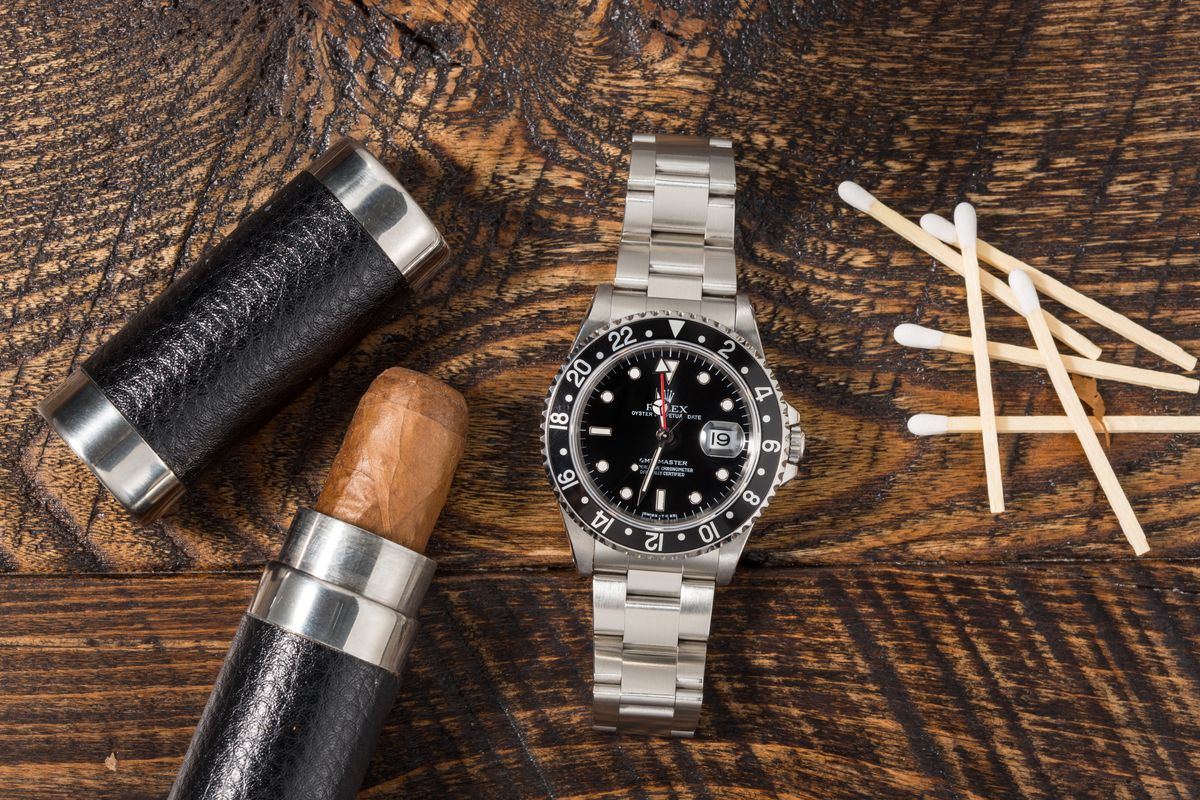
Caliber 3175
New to the Rolex GMT-Master 16700 was the Caliber 3175 movement, which replaced the Caliber 3075 that powered the previous GMT-Master ref. 16750. With that in mind, the updated Caliber 3175 still offered the same core functionality as its predecessor:
– 28,800bph
– Quickset Date
– Hacking Seconds
– 48-hour power reserve
The quickset date function allows the user to change the date instantly and independently from the time-telling hands, rather than having to turn the center hands repeatedly until they pass midnight. The hacking seconds feature means that the seconds hand halts when the wearer pulls out the winding crown, thus permitting more precise time setting.
What is important to note here is that the Caliber 3175 of the GMT-Master ref. 16700 still had synchronized 12-hour and 24-hour hands. Conversely, the GMT-Master II has hour hands that could be set independently. Therefore, the major difference between the GMT-Master and the GMT-Master II is that the former requires turning the bezel to display a second time zone while the latter does not.
The bezel can remain in the zero position on a GMT-Master II while still displaying two time zones simultaneously since the 24-hour and 12-hour hands can be adjusted independently from each other. Furthermore, since the center hour hand and the 24-hand are linked on the GMT-Master it can only indicate two time zones while the GMT-Master II can indicate a third by turning the bezel.
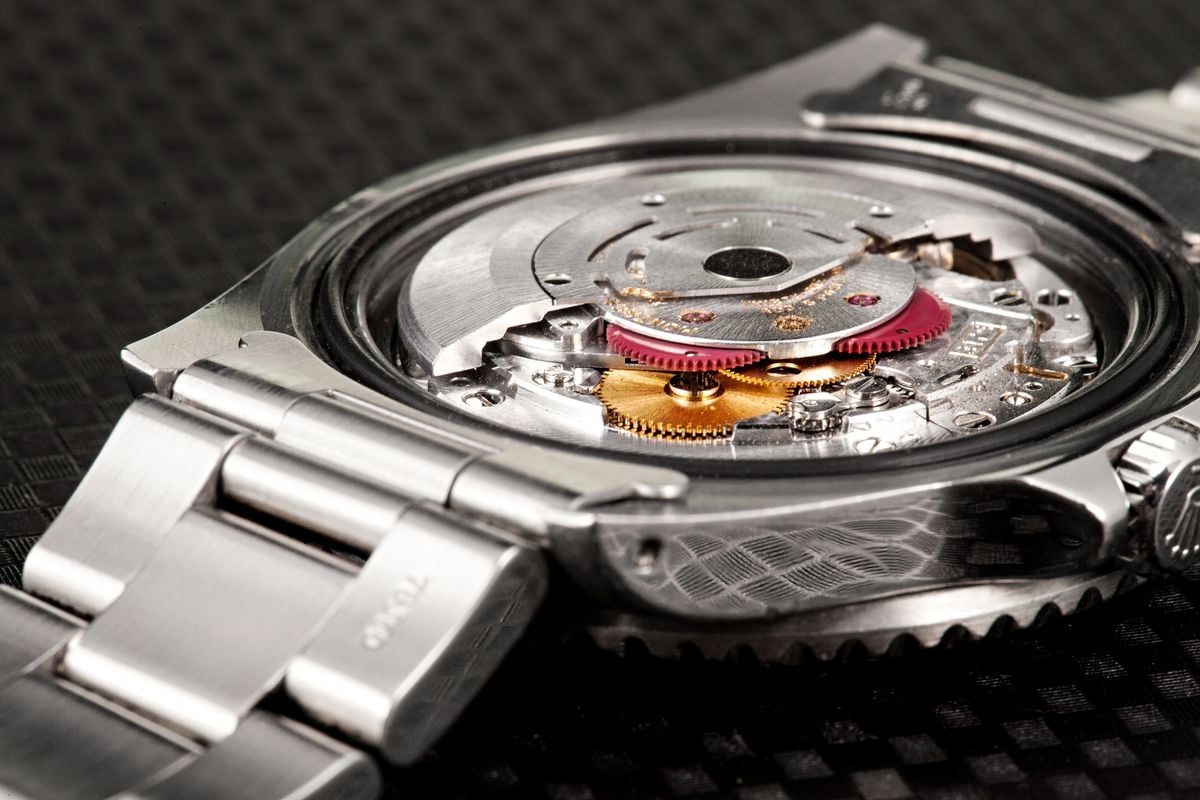
How Much Is A Rolex GMT-Master 16700?
As previously mentioned, the GMT-Master ref. 16700 was positioned as a more affordable alternative to the then-new GMT-Master II. Plus, even in the secondary market, the GMT-Master 16700 was often overshadowed by other GMT-Master references. One of the reasons for this is that the 6542, 1675, and 16750 are considered vintage watches while the 16700 is still too a bit too young to fall into that coveted vintage category.
The best deals in the current pre-owned Rolex market are often those models made in the 1990s since they reside in between the sought-after vintage era and the highly popular current production lineup. For instance, unlike other older GMT-Master references, it is still possible to buy a GMT-Master 16700 at around the $9,000 price point. However, with more buyers becoming interested in discontinued Rolex watches, particularly classic sports models with aluminum bezels and lug holes, the price of the GMT-Master 16700 has risen steadily over the last several years.
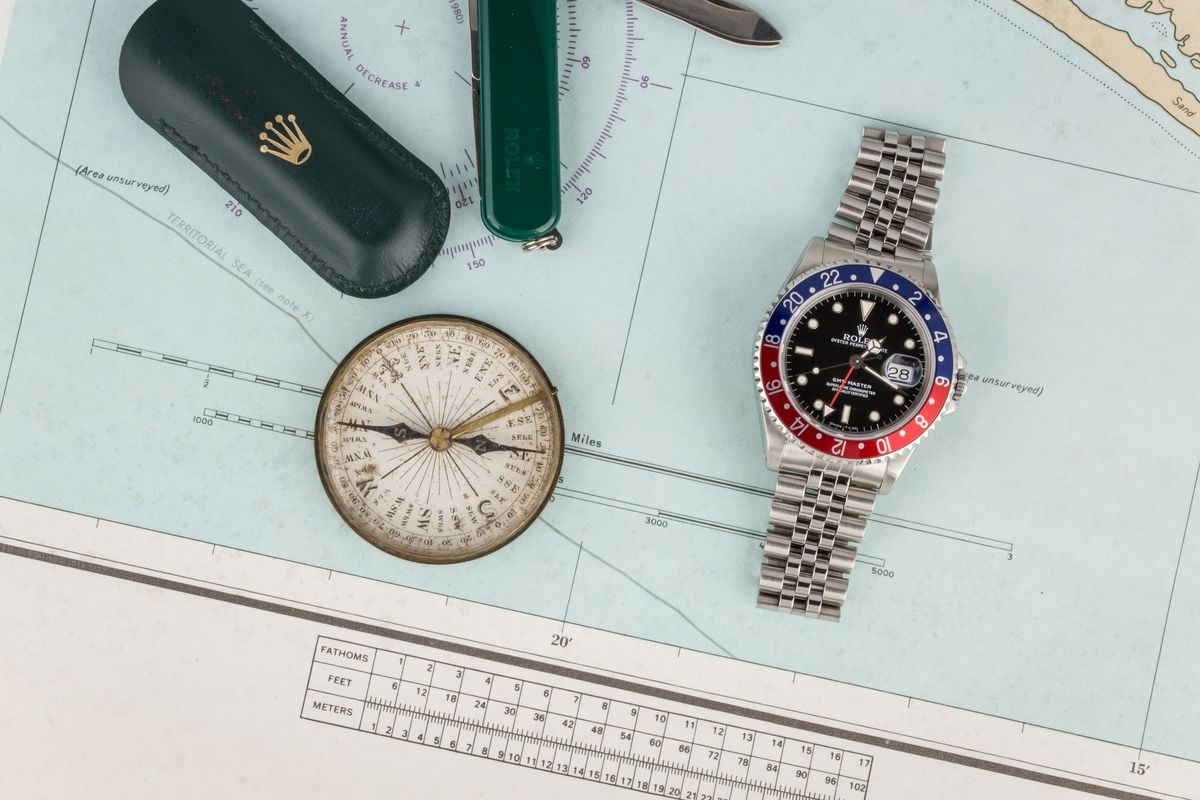
Rolex GMT Watch Comparisons
How does the Rolex GMT-Master 16700 stack up against comparable models? Below is a table outlining the differences and similarities between the GMT-Master 16700 vs. the older GMT-Master 16750 and more advanced GMT-Master II 16760.
| GMT-Master 16700 | GMT-Master 16750 | GMT-Master II 16760 | |
| Production Years | 1988-1999 | 1981-1988 | 1983-1988 |
| Case | 40mm; Stainless Steel | 40mm; Stainless Steel, Gold, or Two-Tone Steel/Gold | 40mm but thicker profile; Stainless Steel |
| Dial | Glossy with White Gold Applied Indexes | Matte with Painted Indexes or Glossy with White Gold Applied Indexes | Glossy with White Gold Applied Indexes |
| Lume | Tritium or LumiNova | Tritium | Tritium |
| Bezel | Aluminum; Blue/Red or Black | Aluminum; Blue/Red, Black, Brown/Gold | Aluminum; Black/Red |
| Crystal | Sapphire | Acrylic | Sapphire |
| Bracelet | Oyster or Jubilee | Oyster or Jubilee | Oyster or Jubilee |
| Movement | Caliber 3175; Coupled hour hands | Caliber 3075; Coupled hour hands | Caliber 3085; De-coupled hour hands |
| Water Resistance | 100 meters | 100 meters | 100 meters |
| Prices | Pre-owned: Starting at $9,000 | Pre-owned: Starting at $10,000 | Pre-owned: Starting at $11,000 |
Rolex finally pulled the plug on the ref. 16700 in 1999, signaling the end of an era. The GMT-Master 16700 was just too similar in its overall look and functionality to the GMT-Master II to keep both as options in the catalog. Rolex grounded the GMT-Master line to make way for the GMT-Master II collection to fly solo.
The GMT-Master ref. 16700 is often an overlooked Rolex reference – especially since at the time, it was competing with its more advanced GMT-Master II sibling. Yet, since it is the very last Rolex GMT-Master model, it represents a significant piece of the Rolex history and an interesting timepiece to have as part of any luxury watch collection.
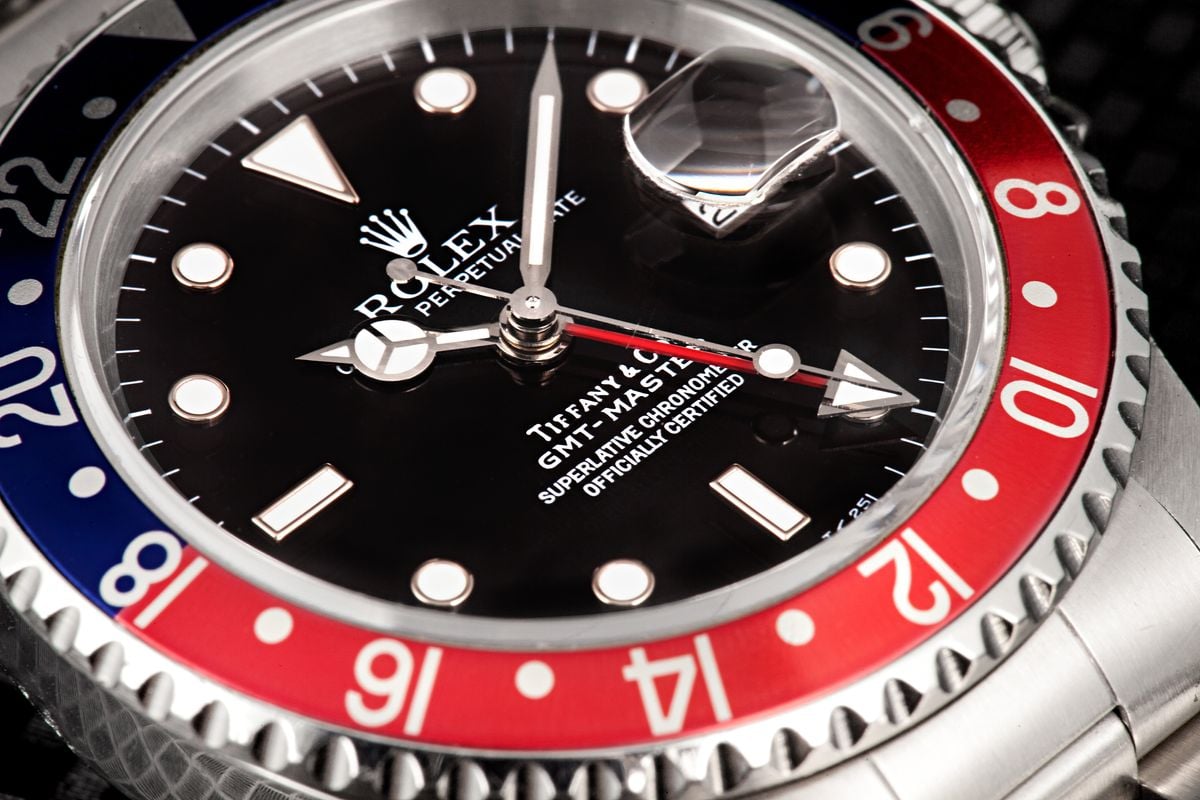
SPEACHLESS!!!!!